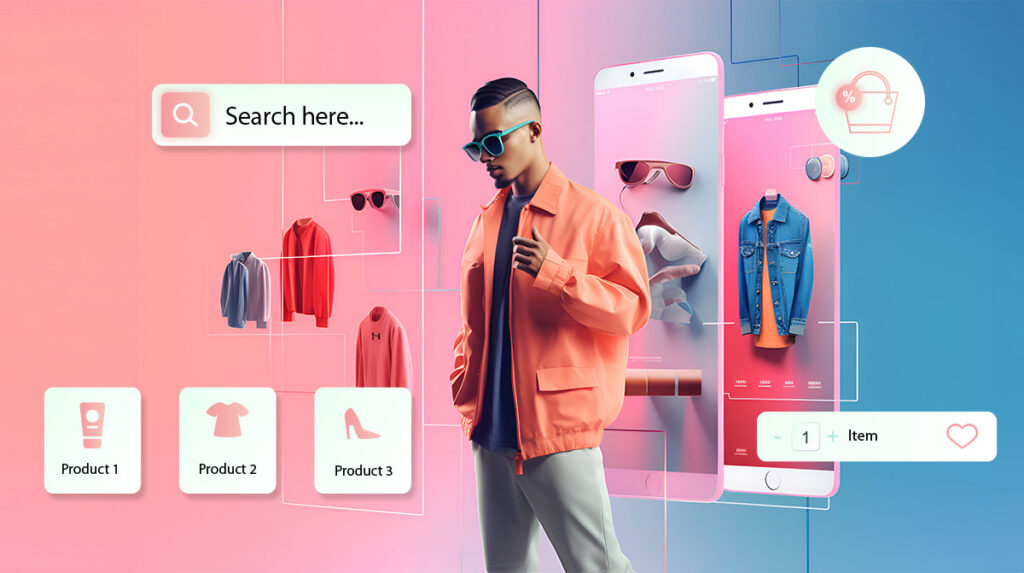Headless Commerce Benefits and Drawbacks The Future of Online Retail

The concept of headless commerce benefits and drawbacks revolves around decoupling the frontend presentation layer from the backend commerce infrastructure. This separation allows for unprecedented flexibility, enabling brands to deliver highly customized digital experiences across multiple channels, from web and mobile to IoT devices. By leveraging APIs, developers can craft unique customer journeys while maintaining robust backend functionality for inventory, payments, and order management. The result is a scalable and agile ecosystem tailored to the demands of modern e-commerce.
Enhanced Personalization and User Experience
One of the most compelling advantages is the capacity for tailored experiences. Retailers can deploy adaptive content, dynamic recommendations, and contextual promotions without being constrained by monolithic systems. Personalization drives engagement, increases conversion rates, and fosters loyalty. Sophisticated UX design can be implemented independently of backend limitations, allowing rapid iteration and experimentation across multiple touchpoints.
Omnichannel Flexibility
Modern consumers interact with brands across diverse platforms, from websites and mobile apps to voice assistants and social media marketplaces. Decoupled architectures enable consistent experiences while integrating emerging channels with minimal disruption. The ability to orchestrate commerce operations across an omnichannel ecosystem is critical for sustaining competitive advantage. Retailers can synchronize inventory, pricing, and promotions without sacrificing the customer experience.
Accelerated Time-to-Market
Launching new campaigns, microsites, or seasonal promotions becomes significantly faster when frontend and backend systems operate independently. Developers can push updates without extensive backend modification, reducing dependency bottlenecks. Agile deployment pipelines empower teams to respond swiftly to market trends, seasonal demand, and shifting consumer behavior, offering a strategic edge in fast-paced retail environments.
Scalability and Performance Optimization
By separating presentation from core commerce functionality, performance bottlenecks are minimized. Websites can scale independently to handle high traffic volumes, and caching mechanisms can be optimized without impacting transactional operations. This architectural approach improves load times, reduces latency, and ensures consistent reliability during peak shopping periods, enhancing overall user satisfaction.
Integration with Advanced Technologies
Headless architecture facilitates seamless integration with AI, AR/VR, chatbots, and voice commerce. Advanced analytics, predictive modeling, and real-time personalization can be layered on top of the backend without complex rewrites. This technological adaptability supports innovative customer experiences, enabling retailers to experiment with emerging tools while maintaining operational continuity.
Cost Considerations and Implementation Complexity
While the benefits are substantial, initial deployment can be costly and resource-intensive. Development requires specialized expertise to design APIs, manage microservices, and integrate multiple systems. Small or mid-sized retailers may face significant upfront investment, including ongoing maintenance and monitoring. Balancing the long-term strategic value against implementation costs is a critical decision for organizations considering this approach.
Security and Data Governance
Decoupled systems introduce additional points of interaction, necessitating robust security protocols. APIs must be secured against potential vulnerabilities, and sensitive data must be protected across channels. Governance frameworks must address compliance with global standards, including GDPR, CCPA, and PCI DSS. Although headless architectures offer flexibility, they require disciplined security management to prevent exposure risks.
Vendor and Technology Lock-In
The choice of backend platform and frontend frameworks can influence flexibility and future adaptability. Selecting proprietary systems may restrict integration options or create dependencies that limit scalability. Open-source solutions offer freedom but require ongoing technical support and governance. Strategic vendor selection and technology planning are essential to ensure long-term sustainability and minimize operational constraints.
Headless vs Traditional E-Commerce
Comparing traditional monolithic platforms with decoupled architectures highlights distinct trade-offs. Conventional platforms offer integrated solutions with lower initial complexity and standardized workflows. However, they can be rigid, slower to adapt, and less capable of delivering highly differentiated customer experiences. Headless systems provide agility, customization, and omnichannel readiness but demand careful architectural planning and ongoing management.
Marketing Agility and Campaign Innovation
Marketing teams benefit from rapid content deployment and experimentation. Microsites, landing pages, and promotional experiences can be launched independently, enabling A/B testing and iterative optimization. Campaigns can respond in real-time to customer behavior, seasonal trends, or social media dynamics. This agility allows brands to capitalize on fleeting market opportunities without backend dependency delays.
Impact on Developer Workflow
Developers gain autonomy by working within decoupled frameworks. Frontend teams can iterate on user interfaces, implement new design paradigms, or integrate third-party services without impacting transactional systems. Backend teams maintain robust commerce operations, APIs, and integrations. This separation enhances productivity, reduces deployment conflicts, and supports parallel development cycles.
Omnichannel Analytics and Insights
Unified customer data collection across channels becomes more actionable in headless environments. Retailers can aggregate behavior from mobile apps, websites, kiosks, and social platforms to inform strategy. Real-time dashboards, predictive analytics, and machine learning models drive informed decision-making. Insights derived from omnichannel engagement support product development, personalization, and retention strategies.
Potential Performance Challenges
Despite improved scalability, the architecture introduces complexity that can impact performance if not managed properly. Excessive API calls, misconfigured caching, or poorly optimized frontends may lead to latency issues. Continuous monitoring, load testing, and performance tuning are necessary to sustain optimal response times and a seamless customer experience.
Third-Party Ecosystem Dependency
Leveraging headless systems often entails reliance on multiple service providers, including CMS, payment gateways, CRM, and analytics platforms. Ensuring seamless interoperability requires rigorous integration planning and vendor management. The ecosystem dependency adds complexity to maintenance, upgrades, and troubleshooting. Strategic vendor selection and contracts are essential to maintain continuity and minimize disruption.
Mobile-First and Progressive Web Application Strategies
Headless architecture is particularly well-suited for mobile-first initiatives and PWA implementations. Frontend flexibility allows the creation of lightweight, responsive, and immersive interfaces optimized for mobile performance. Customers experience fast, app-like interactions while retaining full access to transactional features. This approach enhances engagement, conversion, and brand perception in a mobile-dominated retail landscape.
Custom Checkout Experiences
Traditional platforms often constrain checkout flows to predefined templates. Decoupled systems enable the design of unique, frictionless checkout experiences tailored to audience preferences. Features such as one-click payments, subscription models, or multi-step journeys can be implemented without backend limitations. Customization at this level enhances conversion, reduces cart abandonment, and supports loyalty initiatives.
Internationalization and Localization
Global expansion is facilitated by headless architecture. Frontend layers can adapt content, currency, and promotions to local markets while maintaining a unified backend infrastructure. Multi-language support, regional compliance, and local payment integrations can be deployed efficiently, supporting seamless international operations. This flexibility is critical for brands targeting diverse geographies and cross-border growth.
Headless Commerce and SEO
Decoupling content from the backend requires careful SEO management. Rendering strategies, structured data, and metadata implementation must ensure visibility across search engines. Properly configured APIs and server-side rendering techniques maintain organic search performance. While headless systems offer customization, they necessitate deliberate SEO planning to preserve discoverability.
Real-Time Personalization Capabilities
Dynamic personalization becomes more feasible with decoupled architectures. Content, product recommendations, and promotions can be adjusted in real-time based on user behavior, preferences, and engagement history. Real-time adaptation drives relevance, satisfaction, and loyalty. Personalized experiences differentiate brands in competitive markets and strengthen customer relationships.
Future-Proofing Digital Commerce
Headless systems are inherently modular, allowing retailers to adopt emerging technologies without complete platform overhauls. AI-driven recommendations, augmented reality shopping, voice commerce, and IoT integrations can be implemented incrementally. This future-proofing supports adaptability and long-term strategic growth.
Content Management Flexibility
Frontend decoupling allows content teams to manage updates, campaigns, and media independently. A separate CMS layer enables non-technical teams to modify user experiences, ensuring timely and relevant content delivery. This division of responsibilities reduces bottlenecks and accelerates go-to-market timelines.
API-Driven Ecosystem Benefits
API-first design fosters interoperability, enabling seamless integration with marketing automation, analytics, loyalty programs, and fulfillment systems. Standardized communication protocols reduce friction, allowing diverse teams to innovate without compromising backend stability. API-driven ecosystems support scalability, modularity, and long-term maintainability.
Cost-Benefit Analysis and ROI
Initial investment in headless commerce may be higher than traditional platforms, including development, integration, and maintenance. However, long-term benefits such as faster innovation, omnichannel reach, and enhanced personalization can produce substantial ROI. Strategic planning and phased implementation optimize cost efficiency while capturing value.
Operational Efficiency
Backend operations remain centralized, streamlining inventory management, order fulfillment, and payment processing. Decoupled frontends allow independent experimentation without operational disruption. This balance enhances efficiency, supports rapid iteration, and maintains transactional integrity across channels.
Leveraging Emerging Technologies
The architecture facilitates adoption of AI, ML, AR/VR, and immersive commerce experiences. Integration of predictive analytics, visual search, and recommendation engines enhances engagement. Retailers can innovate without altering foundational systems, accelerating experimentation and market responsiveness.
Headless Commerce for SMBs and Enterprises
While enterprises benefit from scalability, SMBs can adopt headless solutions selectively for critical touchpoints. Modular implementation reduces upfront cost while enabling incremental expansion. Strategic adoption ensures that resources are optimized, supporting growth without overwhelming operational capacity.
Integration of Loyalty and CRM Systems
Decoupled frontends allow seamless connection with loyalty, CRM, and marketing automation platforms. Personalized campaigns, reward systems, and customer retention strategies can be deployed without backend constraints. Integration enhances customer lifetime value and strengthens brand affinity.
Continuous Monitoring and Optimization
Performance monitoring, analytics, and user behavior tracking support continuous improvement. Iterative adjustments to frontend experiences, API performance, and personalization strategies maintain competitive edge. Continuous optimization ensures operational efficiency, enhanced UX, and measurable growth.
Innovation in Payment and Checkout Options
Headless systems enable rapid implementation of new payment methods, installment plans, and alternative financing. Flexibility in checkout design supports experimentation with conversion optimization, loyalty integration, and frictionless transactions. Adapting to evolving consumer payment preferences strengthens competitive positioning.
Strategic Flexibility for Seasonal Campaigns
Retailers can deploy temporary microsites, pop-up campaigns, or seasonal promotions independently. Frontend agility allows quick experimentation with layouts, messaging, and product offerings. Operational autonomy accelerates go-to-market speed, ensuring responsiveness to consumer demand cycles.
Long-Term Strategic Implications
Adopting a headless approach positions retailers for sustainable growth, technological innovation, and enhanced customer engagement. Strategic planning ensures modular expansion, integration with emerging technologies, and scalability across channels. This forward-looking approach supports adaptability in a rapidly evolving retail landscape.
Cross-Channel Analytics Integration
Aggregated data from websites, apps, marketplaces, and IoT devices provides holistic insight into customer behavior. Analytics integration informs personalization, marketing strategy, and inventory management. Unified data enables proactive decision-making and strategic optimization across channels.
Minimizing Frontend Constraints
Design freedom allows creation of immersive, branded experiences without backend-imposed limitations. Developers can implement interactive features, animations, and unique navigation patterns, enhancing engagement. Reduced constraint fosters creativity, differentiation, and brand memorability.
Risk Management and Reliability
While flexibility is enhanced, operational complexity introduces potential risk. Contingency planning, robust monitoring, and redundancy mechanisms mitigate downtime and maintain service reliability. Proactive risk management ensures business continuity, customer trust, and system resilience.
Competitive Advantage Through Innovation
Retailers leveraging decoupled systems can experiment with emerging technologies, omnichannel strategies, and personalization faster than competitors. Strategic adoption of innovation strengthens differentiation, customer loyalty, and market positioning. Agility and adaptability create a sustainable competitive moat.
Summary of Headless Commerce Implications
While headless commerce benefits and drawbacks present both opportunities and challenges, the architecture equips retailers to innovate, scale, and personalize experiences with precision. Strategic implementation, security management, and operational oversight are crucial for capturing the full potential of this transformative approach to digital retail.



